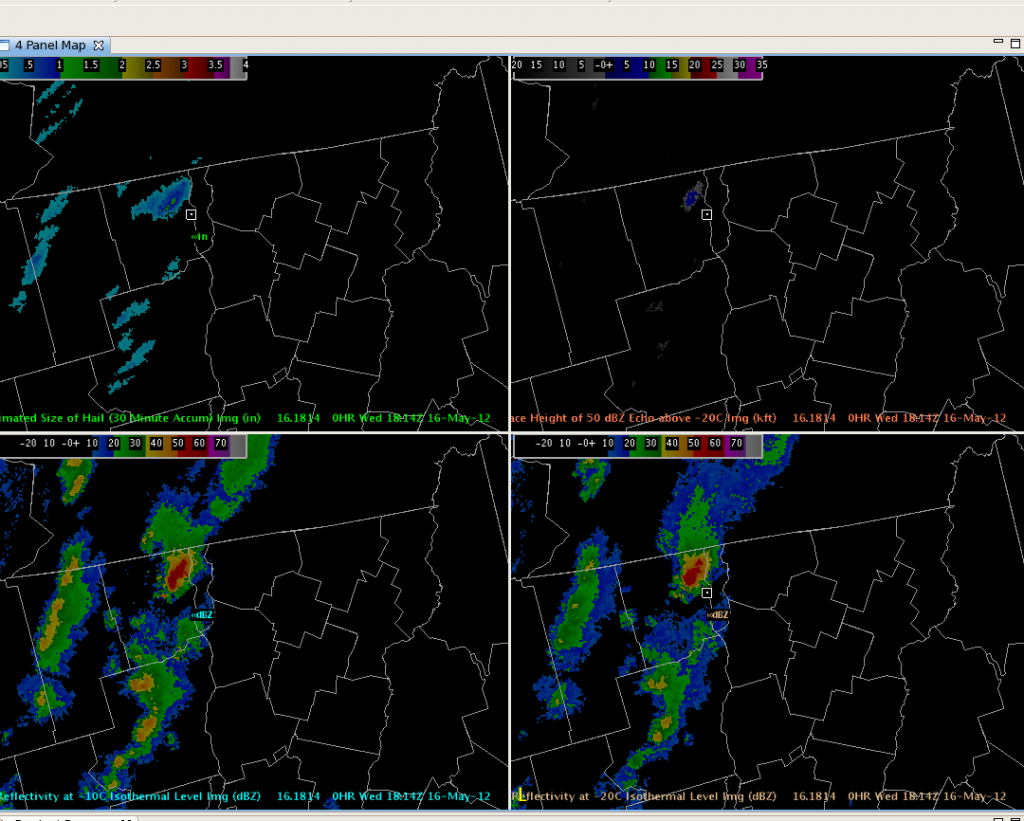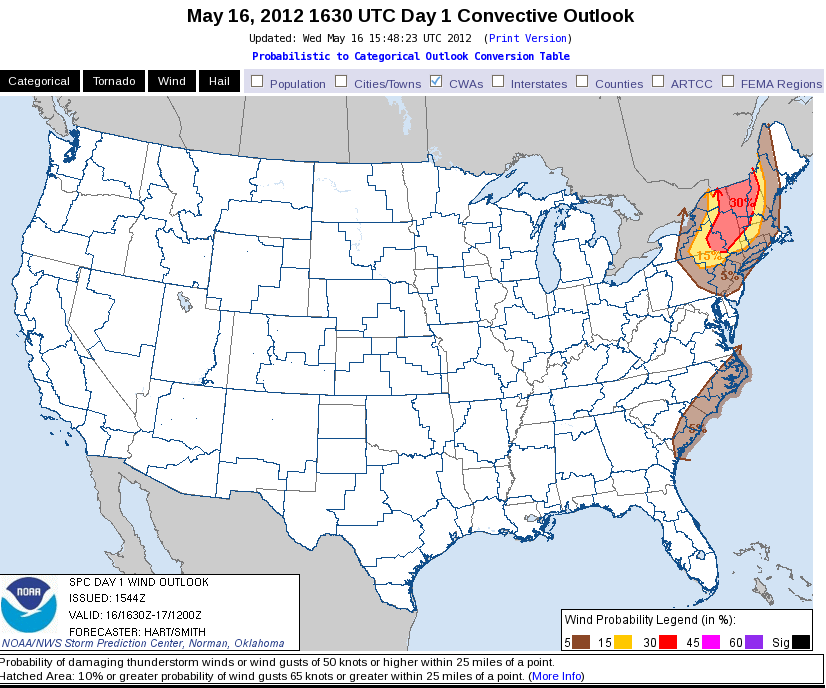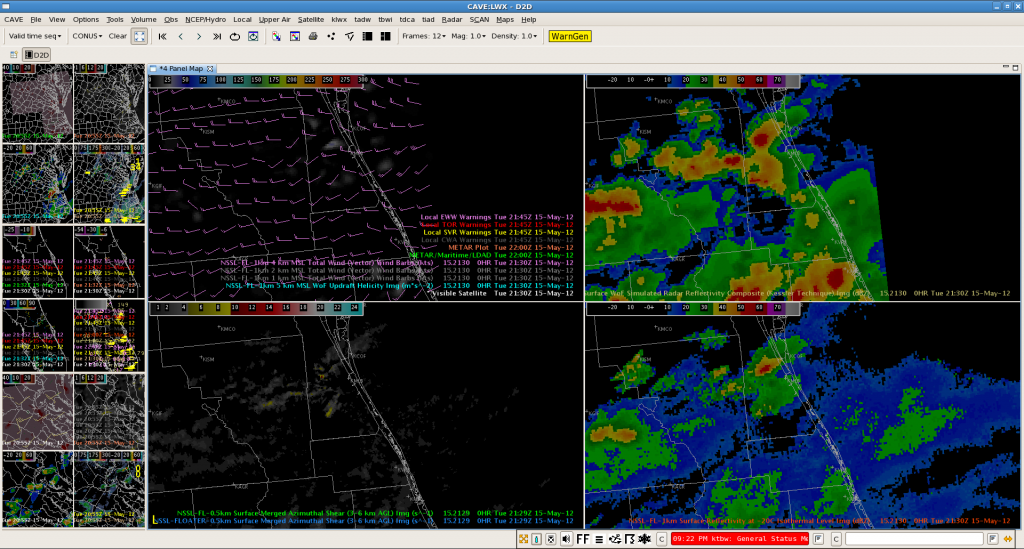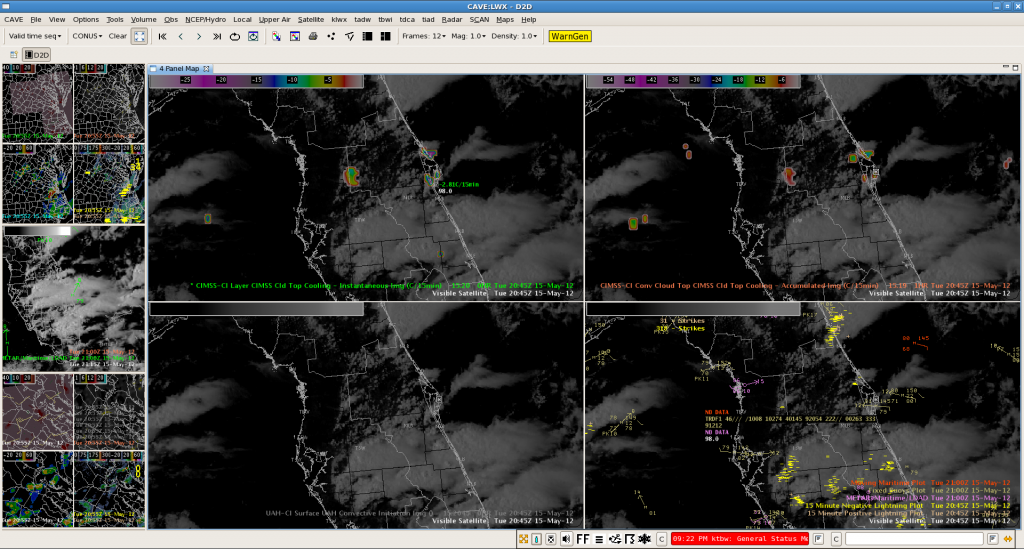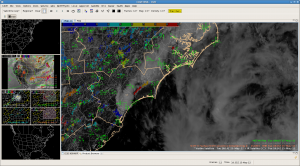Today was one of those days where we ended in somewhat different locations than we intended. Following the morning forecast, we had Stephen and Brian focus on Blacksburg, VA’s CWA while Todd and Julia took on Sterling, VA and the LMA site. We were enthused about the possibility of severe multicells in both areas given the deep, rich moisture, decent CAPE and about 30 kts of deep layer shear. However, the storms that formed remained weak with only a few lightning events per minute. Apparently the weak lapse rates only become worse, likely because the area was on the subsident side of a weak wave lifting into New England.
After a couple hours of failed attempts at vigorous Deep, Moist Convection (DMC). Brian and Stephen moved to the Davenport, IA CWA to sample DMC in a weak CAPE, steep lapse rate layer with 25 kt 3 km winds along a cold front. Initiation was painfully slow as the environment was marginally conducive to DMC. Yet by 6:30 pm storms intensified just enough to produce severe winds just south of Davenport. 3DVAR showed a good example of wind augmentation at 1 km around the south side of one small multicell just before the wind reports. It also showed convergence from what appeared to be a gust front. The base velocity 0.5 deg scan from KDVN showed the downburst in more detail.
Meanwhile we noticed that the Melbourne, FL area had a large pocket of strongly unstable, and unworked air surrounded by active outflow boundaries slowly converging on the CWA. Todd and Julia shifted to Melbourne and set up for a better than expected event. They issued a severe thunderstorm warning for rapid development just northwest of Melbourne. The LMA showed rapid increases in lightning rates up to 20 fl/min I believe. Meanwhile 3dVAR showed some rotation around 5 km MSL. The CI product from UW highlighted some of the initial phases of that thunderstorm. Later on, one of the storms near Titusville began to rotate. Soon KMLB base velocity showed a strong azimuthal shear and a tornado warning was issued. 3dVAR had a gap between two domains that prevented early detection until the 3dVAR northern domain was shifted south. The 3dVAR will need to be redone for a later case review. Meanwhile the UW CTC product didn’t flag the storm as it developed.

The IA case is a great example of a weak CAPE, marginally convective event with severe winds. The MLB case is a good severe GOES-R mini scenario for AWOC.
Jim LaDue: EWP week 2 coordinator




